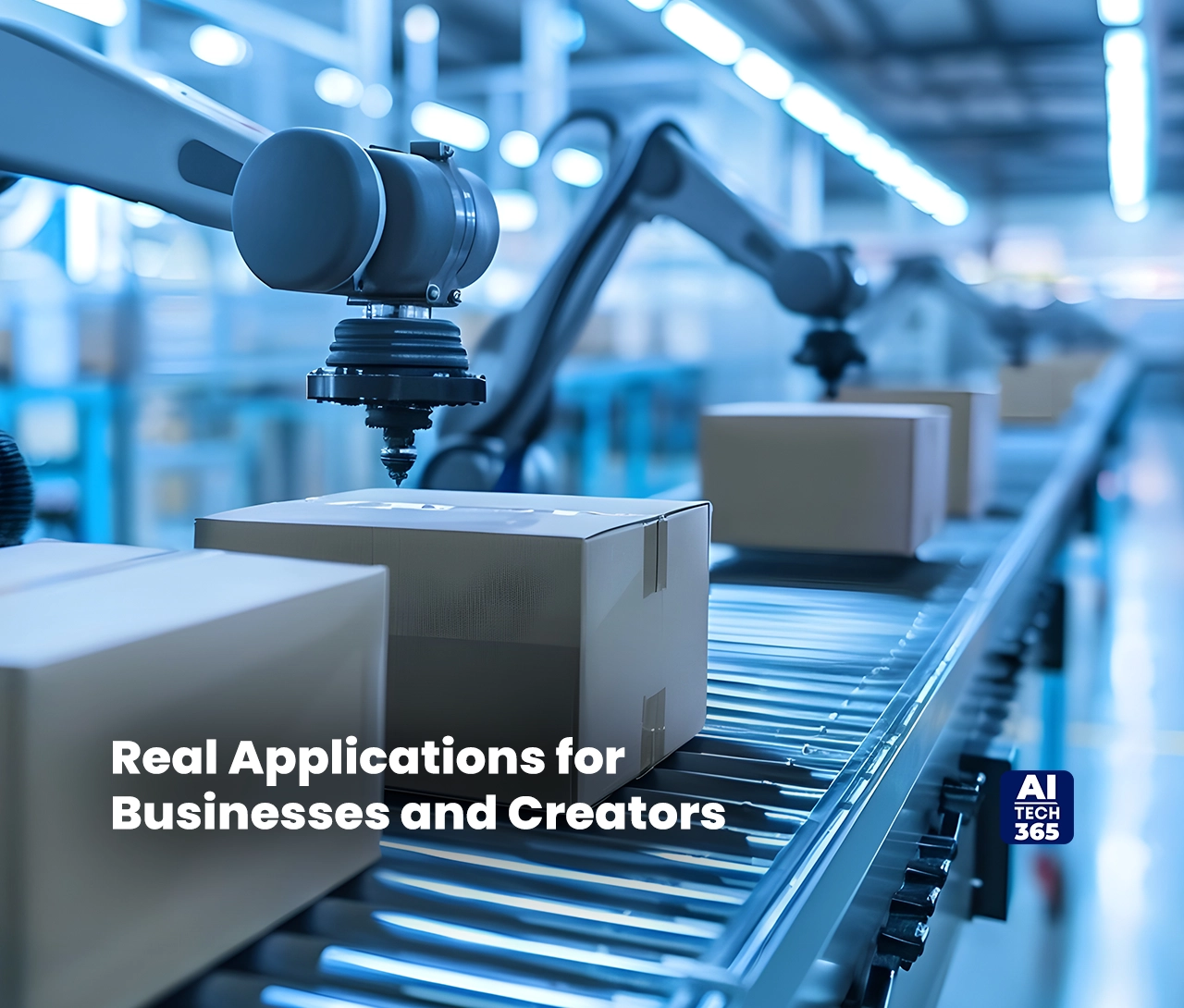Genie 3 feels like a line in a science fiction novel that slid quietly into the present. Announced by DeepMind, Genie 3 is a ‘world model’ that turns a single text prompt into a fully interactive three-dimensional environment you can explore in real time. This isn’t a short pre-rendered clip or a static scene. It’s a playable, persistent world that updates as you interact, runs at real-time frame rates of 24 frames per second, and preserves the consequences of your actions for minutes at a time. For anyone thinking about the future of games, simulation, robotics, or synthetic data, Genie 3 is both a practical tool and a provocative hint of what’s coming next.
What is a World Model and Why Does Genie 3 Matter?
At heart, a world model is an AI that learns to simulate environments in a way that captures dynamics, objects, physics, and cause and effect. Traditional graphics engines require painstaking asset creation and explicit physics rules. Genie 3 flips that workflow: give it a natural language description, and it generates an environment you can walk through, change, and reuse. That capability matters because it accelerates the creation of experiential content and supplies a controlled, diverse training ground where AI agents and humans alike can test behaviors with far less human labor than before. DeepMind positions Genie 3 as a step toward more general-purpose, embodied AI that learns by doing, not just by ingesting text.
How Genie 3 Works at a Glance
DeepMind’s materials and demo describe Genie 3 as autoregressive in its rendering: each new frame is produced while conditioning on the recent history of the scene. That allows it to maintain consistency across time, so if you paint a wall, that paint stays put as the world continues to evolve. The system can deliver real-time interaction at around twenty-four frames per second and a resolution pitched at roughly 720p, with environments that remain coherent for several minutes in a single session. The model also demonstrates visual memory retention of up to one minute, meaning objects and environmental changes remain in place even after they leave the frame. Those technical choices represent a conscious tradeoff between fidelity and responsiveness, geared toward interactivity rather than cinematic realism.
What Genie 3 Can Already Do, Real Demos and The Surprising Bits
The public demos are where the idea shifts from academic curiosity to practical imagination. In DeepMind’s videos you can type a prompt such as a seaside town at dusk or an indoor warehouse and then move through the resulting world, change the weather, place objects, and observe that those changes stick. The model shows object permanence, plausible reactions to user inputs, and basic environmental physics without the user authoring meshes, materials, or collision rules. For developers, that means hours or days of manual asset work compressed into seconds. Reviewers testing Genie 3 reported that generated scenes could be explored for three to five minutes without losing coherence, offering significantly longer-lived interactions than prior models. The result is a sandbox where an agent or a person can test sequences of actions and see emergent behavior in minutes rather than months. Journalists who’ve tested the demo found the scenes playful and significantly longer lived than earlier generative models.
Real Applications for Businesses and Creators
Think of Genie 3 as a multipurpose engine rather than a single product. Game studios could use it to generate prototyping levels, iterate on gameplay ideas faster, or produce side content that remains affordable to create. Training teams building embodied AI, robots, warehouse automation, delivery drones, can simulate edge cases and unusual layouts at scale to round out data used during learning. Education and filmmaking can benefit from rapid scene generation for interactive lessons or storyboardable environments. Even marketing and architecture could use quick 3D mockups that stakeholders can walk through and modify on the fly.
A practical example: instead of building dozens of physical warehouse layouts to test a picking robot, engineers can spawn hundreds of virtual warehouses with different shelf arrangements and lighting, then run policy tests and collect failure cases. Over time, the diversity and realism of synthetic training data can reduce real-world testing needs. Early responses from the research community suggest that such synthetic training grounds will become part of the standard toolbox for embodied AI research.
Also Read: What If You Could Direct an AI Like a Film Crew? Meet Marey by Moonvaley
Limitations and Important Caveats
Genie 3 is not a finished product for every use case. The current demos are restricted to sessions of a few minutes and operate at a resolution and frame rate deliberately chosen for interactivity rather than photorealism. The model isn’t yet a geographic simulator for accurate real-world reconstruction, and it’s available only to select testers at the moment. Those constraints matter: generative world models are powerful, but they are not a drop-in replacement for physics-accurate simulators where precision matters, nor are they ready for unrestricted public deployment without guardrails. DeepMind and independent reviewers note these limitations while also stressing the model’s novelty.
Still, when compared to Genie 2’s sub-20-second lifespan, Genie 3’s multi-minute persistence represents a substantial breakthrough.
The Ethical and Safety Questions You Can’t Skip
Any technology that creates immersive environments raises ethical questions. Who owns the worlds generated from prompts, especially if a prompt references copyrighted places or characters? How do we prevent misuse, such as creating environments that facilitate harmful training or persistent simulations that normalize problematic behavior? There’s also the question of representational bias, what assumptions does the model make about the people, places, and interactions it generates? Institutions using Genie 3–style models for training must pair them with auditing, human review, content filters, and clear provenance tracking to mitigate these risks.
From a safety standpoint, the key priority is transparency. Labs should publish testing benchmarks for safety, provide teams with the tools to inspect and overwrite critical behaviors, and involve ethicists early in deployment decisions. The balance between creative utility and potential harm will shape how quickly and where Genie-class models are adopted.
Actionable Guidance for Teams Who Want to Experiment Now
If you’re a product leader, engineer, or creative director eager to leverage Genie-style capabilities, there are practical steps to take today. Start by defining what success looks like: do you want faster prototyping, richer simulation data, or novel consumer experiences? Run small pilots that compare synthetic and real data performance for specific tasks rather than adopting the model wholesale. Build a checklist for content safety and IP risk that includes human-in-the-loop review. Finally, plan infrastructure: even though Genie 3 emphasizes on-demand generation, real-time worlds require compute and network resources to serve interactive sessions at scale.
For research teams, one low-risk experiment is to use generated worlds as adversarial training data. Create scenarios that your agents struggle with in a controlled simulator, then feed those back into the training pipeline to measure robustness improvements. For creators, a rapid-prototype workflow might pair text prompts with curated overlays and human curation to produce publishable interactive scenes without escalating moderation risk.
What Genie 3 Tells us About The Future of Ai and Content Creation
Genie 3 points toward an ecosystem where content is less about pre-made assets and more about transformations and interactions. Instead of clicking through an asset library, designers can sketch scenes in language and iterate in seconds. For AI research, that shift means more natural, human-like training regimes: agents learn by exploring, making mistakes, and seeing persistent consequences in a sandbox that can be reset, varied, and inspected.
There’s a broader implication too. When models can generate consistent, interactive worlds, they become platforms for further learning. You don’t just get a scene; you get an experimental lab for behavioral science, game design, and robotics. That convergence is what the DeepMind team highlights when they describe Genie 3 as a step toward more general-purpose world models that support multi-minute interactions.
A Quick, Human Anecdote
Imagine a small indie game studio that used to spend weeks building a level for a prototype. The design lead types a paragraph describing a foggy coastal town with a lighthouse and crumbling piers. Within an hour the team is playing through a generated level, testing enemy placement and player navigation. They find a surprising gameplay opportunity in the physics of a broken pier that the model produced spontaneously. That single iteration compresses what used to be a month of work and fuels creative risk-taking. It’s an anecdote that mirrors early reports from developers experimenting with Genie 3 and similar systems.
Next Steps and What to Watch
Expect rapid iteration. DeepMind has released demo videos and limited previews, and the community reaction on forums and technology news sites has been intense. Watch for follow-up research describing the model architecture, training datasets, and benchmarks for temporal consistency. Pay attention to partnerships: integration into cloud AI studios, game engines, and robotics platforms will determine how quickly Genie-style models move from demos to production tools. And track regulatory attention; as immersive content becomes easier to generate, rules around copyright, deepfakes, and simulated harm will follow.
Final Take
Genie 3 is not just an incremental improvement in generative visuals. It reframes how we think about building and testing interactive worlds. The ability to produce consistent, real-time 3D environments from a single text prompt opens doors for rapid prototyping, richer agent training, and novel creative expression. It also raises real questions about safety, ownership, and fidelity. For leaders and creators, the immediate advice is pragmatic optimism: experiment deliberately, pair synthetic scenes with strong review processes, and treat Genie-class models as powerful new tools in the toolbox rather than miraculous fixes. The worlds are becoming playable. The next challenge is to make them useful, responsible, and aligned with human values.


